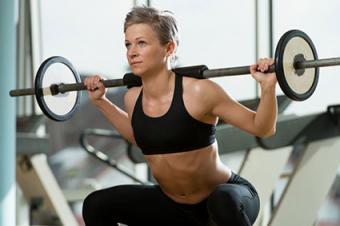
Exercise-induced headaches are common in regular exercise or in sports. They are usually not a serious problem and are caused by the effort or exertion of the exercise and can usually be easily treated. Sometimes, however, they are caused by an underlying medical condition or sudden medical emergency, or by a more severe sports trauma.
Primary Benign Headaches
Primary benign exercise-induced headache are those that occur without any underlying medical cause. They are common in adolescents and young adults.
These headaches come on during regular exercise or recreational sports and always go away. The headache can start abruptly and improve quickly or gradually get worse during the physical activity. Some headaches start after the exercise ends.
Primary benign exercise-induced headaches are also referred to interchangeably as benign exertional headaches or benign effort headaches. The International Headache Society (IHS) groups them together as exertional headaches because they have symptoms in common. However, some authors group them as effort-exertional headaches and others separate them mainly by the types of exercise, exertion or effort that trigger them.
In addition, the IHS puts general migraines in a separate headache category but exercise-induced migraines can be grouped under primary benign headaches.
Benign Exertional Headaches

The exercises that trigger exertional headaches are usually anaerobic activities that involve lifting, pulling or pushing while holding your breath and straining against a closed throat (Valsalva). This is similar to mechanism of headaches that are caused by coughing, sneezing, bearing down, or sex.
The headache might be caused by increased pressure in the brain. The trigger exercises include weight lifting, or weight training rowing, tennis and some team sports.
- The intense headache starts suddenly at the beginning of the exertion and lasts seconds to a few hours.
- It can be a severe stabbing or throbbing and can be generalized over or located at the back of the head (occipital).
- The headache usually comes with upper back and neck pain (cervicogenic headache). There is spasm in the neck muscles and tenderness in the neck and back of the head.
- There may be some nausea and, less commonly, vomiting.
Benign Effort Headaches

The exercises that induce effort headaches include prolonged aerobic activities such as running, jogging or swimming. A possible physiologic reason for the headache is dilation of the blood vessels (vasodilation) and increased blood flow to the brain.
The headache can begin during or after the exercise is finished and last several hours and up to two days. It is usually mild to moderate and can be one-sided or on both sides of the head. It is not usually accompanied by neck pain.
The headache may be similar to a migraine with throbbing or stabbing pain and may be accompanied by nausea and sometimes vomiting, and flashing lights.
Benign Exercise-Induced Migraines
The kinds of exercises or sports that trigger exercise-induced migraines are similar to those that trigger primary exertional or effort exercise headaches. The migraines tend to occur more frequently in long distance runners and in people who have a personal or family history of migraines.
Symptoms include those common to general migraines, including:
- A throbbing or pulsating headache with nausea
- Flashing lights
- Sensitivity to light (photophobia) and sound (phonophobia)
The evaluation, treatment and prevention of exercise-induced migraines are similar to primary and secondary exercise-induced headaches.
Contributing Factors for Benign Headaches
The definitive causes of primary benign exercise-induced headaches are uncertain but possible contributing factors include:
- Dehydration from not drinking enough fluids before a physical activity
- Low blood sugar from not eating enough before exercising
- Lack of sleep
- Family history of headaches, especially migraines
- Hot temperatures or high humidity
- High altitude for people who usually live at lower altitudes
- Not stretching tight neck and back muscles before a workout
- Full-out effort by someone who does not exercise frequently or who has never exercised
- Not doing a full body warm-up enough before intense exercise
- Not cooling down gradually after physical activity
Secondary Headaches
Secondary exertional or effort exercise headaches are caused by an underlying problem that triggers the headache during any form of exercise or sport. They tend to be more common in people over age 50.
The onset is more sudden and severe and usually last longer than primary benign exercise-induced headaches. They can be brought on by any exercise.
Symptoms of Secondary Headaches
The headaches are usually severe or excruciating, and throbbing. They can be one-sided, bilateral or more generalized all over the head. They can be accompanied by:
- Nausea
- Vomiting
- Double vision
- Flashing lights
- Neck rigidity
- Change in speech and movement
- Sometimes, loss of consciousness
Causes
Causes of this category of exercise-induced headaches include:
- A hemorrhage between the brain and its covering (subarachnoid hemorrhage)
- A stroke caused by bleeding in the brain or a blood clot from atherosclerosis of the blood vessels in the brain or elsewhere
- Carotid artery a traumatic tear in the wall of the carotid artery in the neck
- A benign or cancerous brain tumor (especially in back of brain, the posterior fossa)
- A block in the flow of cerebral fluid in the brain causing build-up of pressure or water
- Trauma to the brain during contact or collision sports
- Underlying high blood pressure (hypertension) increasing during exercise
- Hyperthyroidism, which can increase heart rate and blood pressure
- A sinus headache triggered by the exercise, especially if an infection is present
Cardiac Exercise-Induced Headaches
A cardiac exercise-induced headache (cardiac cephalalgia) is a secondary type of headache. A few people with coronary artery or atherosclerotic heart disease (CAD) or people over 50 with risks for CAD can manifest this type of exercise-induced headache. It may occur as the only symptom of exertional chest pain in a patient with underlying heart disease.
The headache tends to start at the beginning of exercise and gradually worsen and goes away after the person stops exercising. The headaches are relieved by nitroglycerin, the medicine used to treat cardiac chest pain. They don't recur after surgery or drugs to treat the underlying condition.
Sports-Induced Headaches

Sports-induced headaches are common in recreational, amateur or professional athletes. The headaches can be benign primary exertional or effort headaches or secondary headaches caused by brain or heart disease or other secondary causes.
Sports can trigger headaches because of the physical activity during the sport or from the conditions, injuries or equipment particular to a specific sport. Headaches can be mild or severe, migraine or non-migraine and accompanied by other symptoms depending on the cause. Sports-related headaches include those from:
- Trauma to the head and neck during a collision in a contact sport such as soccer, football or hockey can result in a concussion headache, which can vary in severity depending on the impact
- Post-traumatic headaches from these injuries that start hours to days after the initial trauma; headaches during or after sports trauma should be evaluated immediately for brain injury.
- A "footballer's headache," which can happen to a soccer player who "heads" the ball
- An athlete's equipment, such as tight helmets or gripping a mouthpiece
- A swimmer's headache from jumping into cold water or wearing tight goggles
- Scuba diver's headache that start in the water or after a quick ascent to the water surface; causes of the headache include air embolism, decompression sickness and carbon dioxide in the blood
- Headaches in mountain climbers can occur at high altitudes above 3,000 feet when available oxygen decreases enough to cause symptoms. The headache may be due to acute mountain sickness (AMS) or other causes. Treatment is descent from the mountain. Steroids may also be necessary for brain edema which occurs more frequently after 5,000 feet.
Evaluation, treatment and prevention of sports-induced headaches are especially important for the competitive amateur and professional athlete.
Evaluation
Immediate medical attention is required when a sudden, severe, excruciating headache is accompanied by:
- Nausea and vomiting
- Blurred or double vision
- Flashing lights
- Light-headedness
- Chest pain
- Confusion
- Difficulty speaking or moving one side of the body
- Numbness and tingling in body, hands, fingers, feet and toes
- Loss of consciousness
Specific evaluation for an exercise-induced headache depends on how severe it is, if there are additional symptoms, and the history and recurrence of similar symptoms. General work-up includes:
- A basic evaluation of blood pressure and other vital signs, checking for neurological signs such difficulty with movement or speech blood tests such as blood sugar, blood cell count, electrolytes and thyroid tests
- Further evaluation based on the history and severity and accompanying symptoms and signs:
- CAT scan for a headache that is minutes to a day old
- Spinal tap (lumbar puncture) to check for bleeding in the brain, especially if the CAT scan is negative
- MRI scan for a headache that is older than two days
- Imaging the blood vessels to look for a site of bleeding, aneurysm or vessel malformation in the brain (angiography)
- Evaluation for coronary artery disease
Treatment
Always consult with your own doctor about a specific treatment plan for your exercise-induced headache. Primary headaches can usually be treated or prevented with the right medicines. Secondary headaches need specific treatment of the underlying cause.
Immediate Remedy
For immediate treatment for an acute primary benign headache, your doctor might suggest applying ice to the neck and head and taking an anti-inflammatory might bring relief. Anti-inflammatory medicines include over-the-counter (OTC) such as Naproxen ibuprofen, Anacin, or Excedrin or prescription Indomethacin (Indocin). Other prescription medicines include Imitrex or butalbital and caffeine-containing preparations such as Fiorinal or Fioricet.
Prevention
To prevent recurrence of headaches during a workout, a doctor might advise an OTC or might prescribe prescription daily propranolol or indomethacin (Indocin) or Imitrex daily or one to two hours before exercise.
Non-medicine prevention recommendations include:
- Avoid exercises or conditions that bring on a headache until your problem is treated.
- Be sure to drink water or a sports drink before exercising and every 15 minutes during prolonged strenuous exercise to stay hydrated.
- Eat a small protein and carbohydrate snack or meal before exercising so you have enough energy.
- Get enough sleep so you stay alert.
- Warm up before and cool down after exercising.
- Stretch before exercising or playing a sport.
- Start out exercising slowly; don't go from zero to a hundred in a flash.
- Breath and relax during a workout.
Consult With Your Doctor
Exercise-induced headaches are common in physical activities including regular exercise and sports. If other symptoms are also present, or your headaches recur every time you exercise or are severe, be certain to seek immediate medical attention.
Consult with your doctor for specific advice about what to do if you get a headache during or soon after exercise of any kind and to get specific long-term treatment if it keeps recurring.







